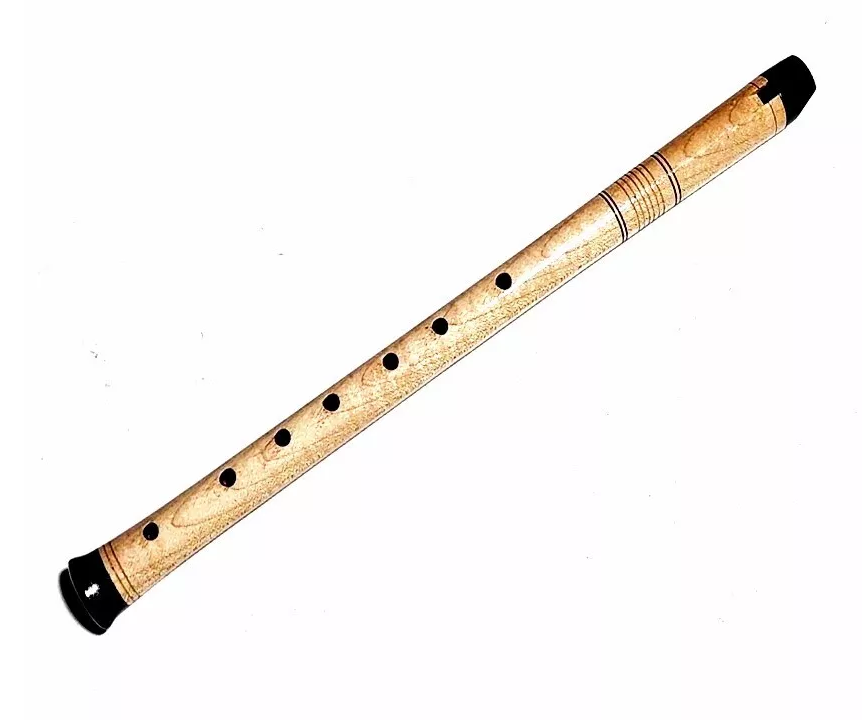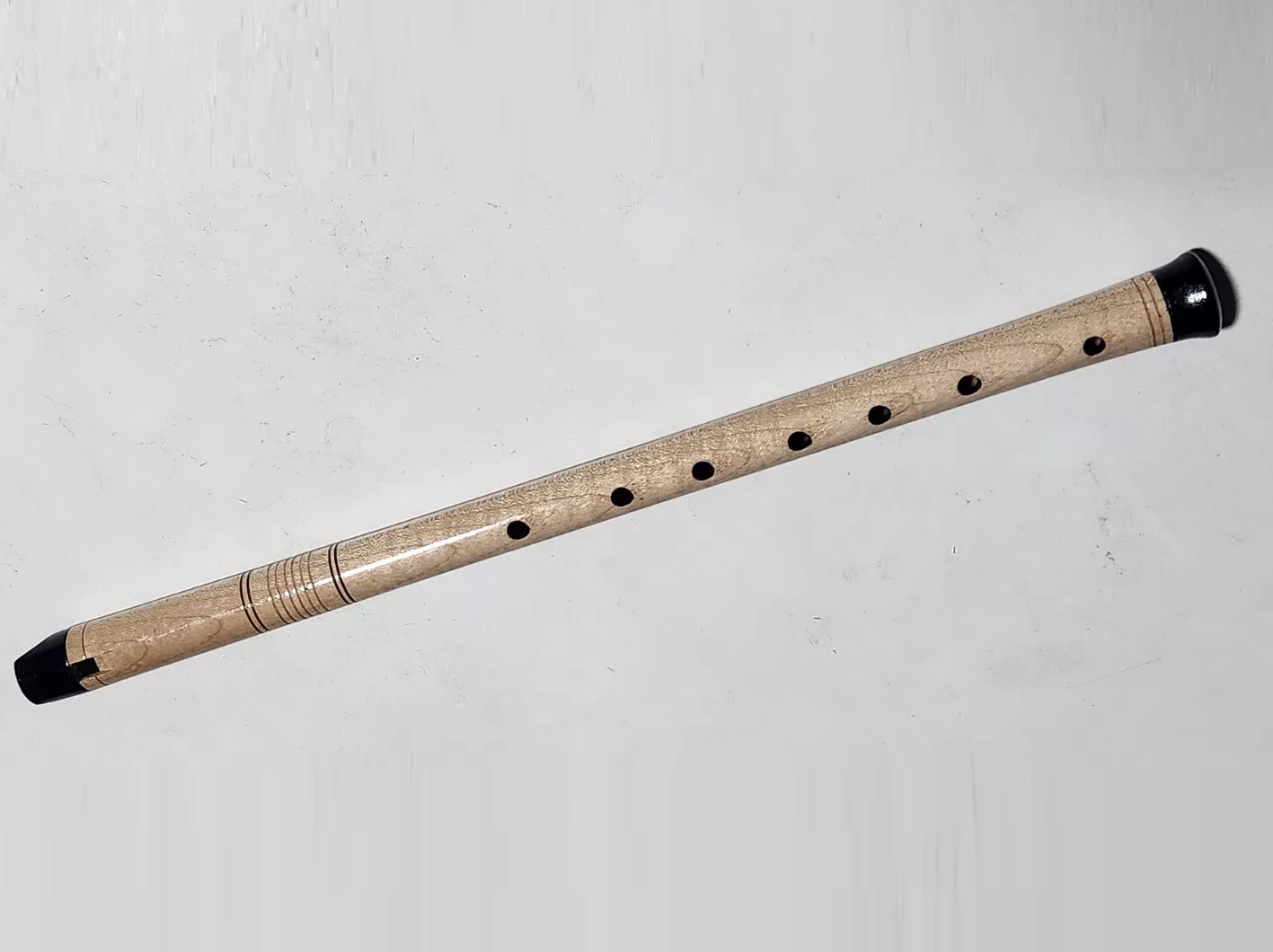Tutek
Woodwinds
Asia
Between 0 and 1000 AD
Video
The tutek, also known as the tütək in Azerbaijani, is a traditional wind instrument prevalent in various cultures, notably in Azerbaijan and Turkey. It is a type of fipple flute, characterized by its simple yet effective design. Typically crafted from woods such as plum, ebony, or apricot, the tutek measures approximately 28 to 30 centimeters in length with a diameter of about 20 millimeters. The instrument features seven finger holes on the front and a thumb hole on the back, allowing for a range of musical notes. The lowest hole on the front is seldom, if ever, covered while playing. Its construction and design contribute to its pleasant, soft timbre, making it a favored choice for various musical expressions.
Type of Instrument
The tutek belongs to the woodwind family of musical instruments, specifically classified as a fipple flute. Fipple flutes produce sound when the player blows air into a duct, which directs the air against a sharp edge, causing the air column inside the instrument to vibrate. This mechanism distinguishes fipple flutes from other wind instruments that may require different blowing techniques. The tutek’s design allows for ease of play, making it accessible to both novice and experienced musicians.
History
The Tütək is an ancient wind instrument that originated in Asia, specifically in the Caucasus region, with a strong presence in Azerbaijan and surrounding countries. Its history dates back several centuries, with roots in traditional folk music, particularly among shepherds and rural communities. The instrument is believed to have existed since at least the Middle Ages (5th–15th century) and has connections to similar flutes and reed instruments found in Eastern Europe, the Middle East, and Central Asia. Historically, the tütək was used for both musical performances and communication, as its high-pitched sound could carry across long distances, making it ideal for shepherds tending to their flocks. Over time, the instrument became an essential part of Azerbaijani folk music, maintaining its cultural significance through generations.
The tutek has been a common shepherds’ musical instrument since ancient times. Various types of tutek are spread throughout many countries.
Materials and Construction
Traditionally, the tutek is crafted from dense woods such as plum, ebony, or apricot. These materials are chosen for their durability and the quality of sound they produce. The instrument’s body is a hollow tube with a fipple at one end, which directs the player’s breath into the instrument. The seven finger holes on the front and the thumb hole on the back are carefully placed to allow for a full octave of notes, with the possibility of additional notes through overblowing techniques. The precise craftsmanship involved in creating a tutek ensures its tonal accuracy and playability.
Types of Tutek
While the basic design of the tutek remains consistent, variations exist based on regional preferences and specific musical requirements. In Azerbaijan, for instance, there are both small and large versions of the tutek. The primary difference between these versions lies in their size, which affects the pitch and tonal quality of the instrument. Larger tuteks produce deeper, more resonant tones, while smaller ones yield higher pitches. These variations allow musicians to select an instrument that best suits their performance context and desired sound.
Characteristics
The tutek is renowned for its pleasant, soft timbre, which lends a gentle and melodic quality to musical compositions. Its design facilitates ease of play, making it suitable for both solo performances and ensemble settings. The instrument’s range can be controlled by the force of breath, allowing skilled players to achieve dynamic variations and expressive nuances. The tutek’s adaptability and distinctive sound have cemented its place in various musical traditions.
Sound Production
Sound is produced on the tutek by blowing air into the fipple, which directs the airflow against a sharp edge inside the instrument. This action causes the air column within the hollow body to vibrate, generating sound waves. By covering and uncovering the finger holes, the player alters the effective length of the vibrating air column, thereby changing the pitch of the notes produced. The force of the player’s breath also influences the register and dynamics, allowing for expressive performances.
Playing Methods
To play the tutek, the musician holds the instrument horizontally, with the fipple end placed near the mouth. The fingers of both hands are used to cover and uncover the finger holes, while the thumbs provide support and operate the thumb hole on the back. By blowing gently into the fipple and manipulating the finger holes, the player produces different pitches. Advanced techniques, such as overblowing, can be employed to reach higher registers, expanding the instrument’s range. The simplicity of the tutek’s design belies the depth of skill required to master its expressive capabilities.
Roles in Music
The tutek holds a significant place in the musical traditions of regions where it is prevalent. In Azerbaijan, for example, it is used in various musical contexts, from solo performances to ensemble pieces. Its soft and melodic sound complements other traditional instruments, such as the tar and kamancha, adding a distinctive voice to the overall musical texture. The tutek’s versatility allows it to be featured in both folk music and more formal compositions, highlighting its enduring appeal.
Cultural Significance
Beyond its musical applications, the tutek holds cultural significance in the regions where it is traditionally played. As a common shepherds’ instrument since ancient times, it is deeply intertwined with pastoral life and rural traditions. The tutek’s melodies often evoke themes of nature, daily life, and communal experiences, reflecting the cultural heritage of the communities that cherish it. Its continued use in traditional ceremonies and celebrations underscores its role as a cultural emblem, preserving and conveying the values and stories of its people.
FAQ
How has the Tutek influenced traditional music?
The Tutek has played a vital role in folk traditions, adding a distinctive timbre to regional melodies. Its unique tonal qualities make it a preferred instrument for cultural storytelling and ceremonial music. Many traditional ensembles incorporate it to preserve authentic sounds. It continues to shape musical heritage through performances and recordings.
What makes the Tutek unique in musical compositions?
The Tutek’s expressive dynamics and rich tonal spectrum allow composers to create intricate melodic patterns. Its breath control requirements add a human touch to compositions, making each performance distinct. Composers use its versatility in various genres, from folk to experimental music. Its role extends beyond melody, adding texture to compositions.
How does the Tutek contribute to modern music?
Contemporary musicians integrate the Tutek into fusion genres, blending its sound with electronic and orchestral music. It brings an organic, folk-inspired warmth to modern compositions. Artists experiment with new playing techniques to expand its sonic range. Its adaptability ensures its continued relevance in evolving musical landscapes.
 Links
Links
References
Other Instrument
Categories



















